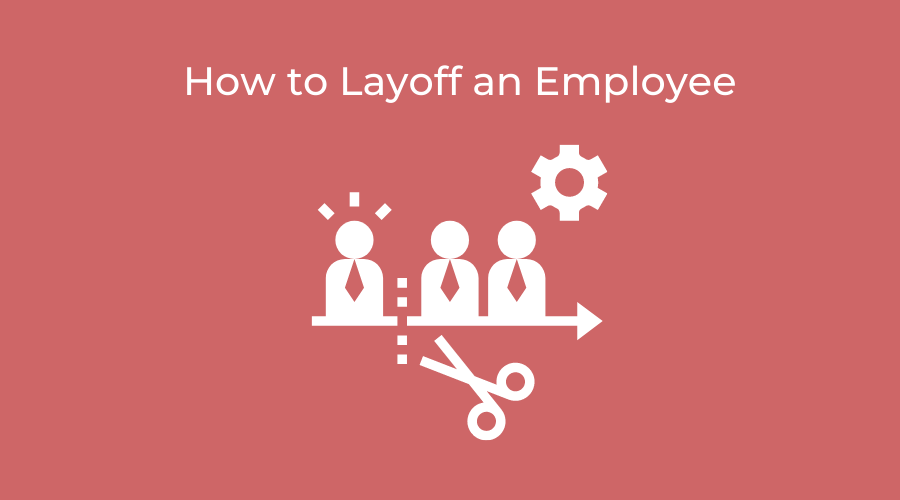
How To Layoff An Employee
One of the less liked aspects of working in HR is terminating or laying off employees. While terminations don’t happen often and, in some cases, can be avoidable, layoffs tend to be driven by the needs of the business. Since globalization and social media have given us all the ability to harness unlimited information in the palm of our hands via cell phones, employers cannot afford to get layoffs wrong. Especially bad are those layoffs via text stories.
What happens when employers screw up a layoff?
The world hears about it. The quickest way to increase your reputational risk is to have your layoff trend on social networks. If your layoff was driven by the market or financial restraints, you risk losing more customers and future candidates. If you fumble the layoff in some way, you also run the risk of seeing current employees start looking for new employers and the laid-off employees completely writing your company off for good.
If this isn’t your first layoff nor is it the first time your layoff trended, it highlights a potentially toxic environment. It also shows an inability to improve processes. To be careless with your laid-off employees also highlights the employer may be careless with the employees that are still with them and have not accounted for survival guilt, burnout from an additional workload, and more.
Is there a perfect way to lay off employees?
No! Layoffs affect one’s livelihood. Employees are facing increasing anxiety from living in a never-ending pandemic, a war that has global impacts, rising inflation in just about every market, and more. While a layoff may help the business’ bottom line in the short term, it is one more thing already anxious employees must manage. If there is no perfect way, how can an employer improve their layoff process?
Audit your current process.
If you don’t have a process, then today is a great day to create one. Even if you don’t foresee your employer laying off employees anytime soon, it’s still a great time to build a contingency plan for the day you must.
If you have a process and you’ve laid off employees before, it’s a great time to review how effective that process is. What did you learn from your previous layoff? What trends did you see from current/past employees or potential customers discussing your layoff on social media channels? If you could redo the layoff, what would you do differently?
Get buy-in from the right players.
The quickest way to kill a project before it starts is to not include all key players in the process. Layoffs are sometimes like that. While you don’t necessarily have to share a list of at-risk employees, you should connect with stakeholders in the process. Some of those stakeholders could be your recruiting team. One thing I find odd is to see a company hiring while also laying off employees. Is there a possibility to transition employees into new roles to avoid laying them off?
Other stakeholders are the key players who discuss talent planning and succession. Could there be a possibility to shorten succession times by moving at-risk employees into roles, especially if the layoff has the potential to increase a knowledge gap in a role or department?
Provide the right “layoff” benefits.
What severance package do you offer employees? It’s typical for severance packages to offer X number of weeks in pay for X years of service, but additional benefits are needed. COBRA insurance is expensive; could you extend health insurance for your laid-off employees? Do you offer EAP or mental health services that you can extend for these laid-off employees? What transitional services could you provide to help them find their next job? Transitional services should include resume reviews and career coaching.
Create a marketing plan.
Most employers would rather not have to mention layoffs. They’d rather let the people know who were impacted and go about their day. However, social media makes that unavoidable. It’s becoming more common to see articles and trending topics even before the layoffs happen. Therefore, not only do you need talking points, but you should have a marketing plan to proactively address the backlash. No longer can you sweep this under the rug because your reputation is at stake.
Follow the law and keep your word.
This should go without saying but needs to be said. Please have your legal and HR teams verify laws to ensure you’re not breaking any. And when extending benefits or services, have integrity and honor your commitments.
At the end of the day, laying off an employee is not transactional and shouldn’t be treated as such. Every step of the process must have a human-first approach. It’s not OK to hold a zoom meeting to announce a massive layoff. It’s not OK to direct deposit severance checks in an employee’s account before even telling them they’ve been laid off. When you approach it with the same care and concern you give your customers, you will be able to alleviate some of the pain points that come with laying off employees.
Timara Nichols has 15+ years of experience, specializing in human resources, operations, and customer success. She holds the following certifications – aPHR, Certified ScrumMaster, and Meta Certified Community Manager.


